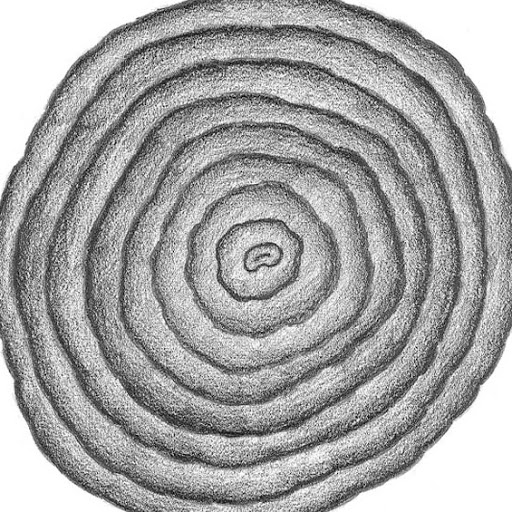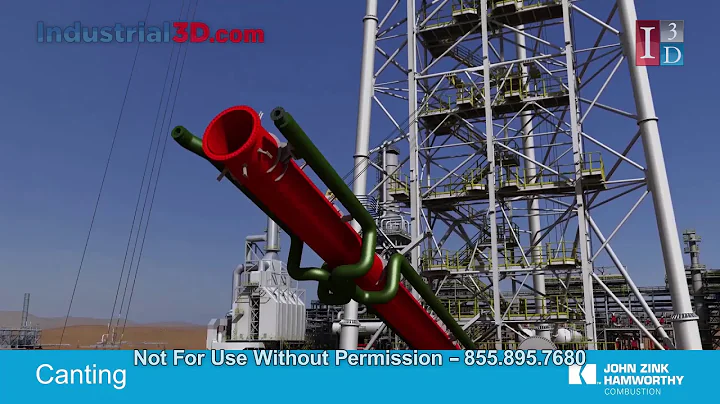John C Zink
age ~82
from Tulsa, OK
- Also known as:
-
- John Charles Zink
- Joseph C Zink
- Jim Zink
- Mary Zink
- John Zinc
- Phone and address:
-
5901 E 110Th St, Tulsa, OK 74137
(918)6301719
John Zink Phones & Addresses
- 5901 E 110Th St, Tulsa, OK 74137 • (918)6301719
- 6111 E 107Th St, Tulsa, OK 74137 • (918)2986111
- Lake Leelanau, MI
- Garland, TX
- Broken Arrow, OK
Work
-
Company:AFLAC CANCER CENTER AND BLOOD DISORDERS SERVICE OF CHILDREN'S HEALTHCARE OF ATLANTA - EGLESTON CAMPUS
-
Address:1405 Clifton Rd Ne Suite 3Rd, Atlanta, GA 30322
-
Phones:(404)7856000 (404)7852370
Education
-
School / High School:University of South Carolina At Columbia2007
Languages
English
Ranks
-
Licence:Virginia - Authorized to practice law
-
Date:1984
Specialities
Critical Care Surgery
Medicine Doctors

Dr. John U Zink, Dallas TX - MD (Doctor of Medicine)
view sourceSpecialties:
Critical Care Surgery
Age:
44
Address:
5323 Harry Hines Blvd, Dallas, TX 75390
(214)6488870 (Phone), (214)6485477 (Fax)
5201 Harry Hines Blvd, Dallas, TX 75235
(214)5908000 (Phone), (214)5908341 (Fax)
AFLAC CANCER CENTER AND BLOOD DISORDERS SERVICE OF CHILDREN'S HEALTHCARE OF ATLANTA - EGLESTON CAMPUS
1405 Clifton Rd Ne Suite 3Rd, Atlanta, GA 30322
(404)7856000 (Phone), (404)7852370 (Fax)
BAY AREA SURGICAL SPECIALIST
365 Lennon Ln Suite 250, Walnut Creek, CA 94598
(925)9326330 (Phone), (925)9320139 (Fax)
2085 Clearview Ct, Walnut Creek, CA 94598
(214)6488870 (Phone), (214)6485477 (Fax)
5201 Harry Hines Blvd, Dallas, TX 75235
(214)5908000 (Phone), (214)5908341 (Fax)
AFLAC CANCER CENTER AND BLOOD DISORDERS SERVICE OF CHILDREN'S HEALTHCARE OF ATLANTA - EGLESTON CAMPUS
1405 Clifton Rd Ne Suite 3Rd, Atlanta, GA 30322
(404)7856000 (Phone), (404)7852370 (Fax)
BAY AREA SURGICAL SPECIALIST
365 Lennon Ln Suite 250, Walnut Creek, CA 94598
(925)9326330 (Phone), (925)9320139 (Fax)
2085 Clearview Ct, Walnut Creek, CA 94598
Languages:
English
Hospitals:
5323 Harry Hines Blvd, Dallas, TX 75390
2085 Clearview Ct, Walnut Creek, CA 94598
5201 Harry Hines Blvd, Dallas, TX 75235
AFLAC CANCER CENTER AND BLOOD DISORDERS SERVICE OF CHILDREN'S HEALTHCARE OF ATLANTA - EGLESTON CAMPUS
1405 Clifton Rd Ne Suite 3Rd, Atlanta, GA 30322
BAY AREA SURGICAL SPECIALIST
365 Lennon Ln Suite 250, Walnut Creek, CA 94598
Emory University Hospital
1364 Clifton Road North East, Atlanta, GA 30322
2085 Clearview Ct, Walnut Creek, CA 94598
5201 Harry Hines Blvd, Dallas, TX 75235
AFLAC CANCER CENTER AND BLOOD DISORDERS SERVICE OF CHILDREN'S HEALTHCARE OF ATLANTA - EGLESTON CAMPUS
1405 Clifton Rd Ne Suite 3Rd, Atlanta, GA 30322
BAY AREA SURGICAL SPECIALIST
365 Lennon Ln Suite 250, Walnut Creek, CA 94598
Emory University Hospital
1364 Clifton Road North East, Atlanta, GA 30322
Education:
Medical School
University of South Carolina At Columbia
Graduated: 2007
University of South Carolina At Columbia
Graduated: 2007
Lawyers & Attorneys

John Frederick Zink - Lawyer
view sourceLicenses:
Virginia - Authorized to practice law 1984

John Zink - Lawyer
view sourceSpecialties:
Commercial Litigation
Litigation
Other
Litigation
Other
ISLN:
902515695
Admitted:
1970
University:
Washington & Lee University, B.A., 1967
Law School:
Washington & Lee University School of Law, J.D., 1970
Us Patents
-
Better Use Of Gas Discharge Energy For Smoke Suppression
view source -
US Patent:41881834, Feb 12, 1980
-
Filed:Mar 21, 1977
-
Appl. No.:5/779595
-
Inventors:John S. Zink - Tulsa OK
Robert D. Reed - Tulsa OK
Robert E. Schwartz - Tulsa OK -
Assignee:John Zink Company - Tulsa OK
-
International Classification:F23D 1500
-
US Classification:431202
-
Abstract:Apparatus for the smokeless combustion of gases, supplied at substantial pressure, such that they will aspirate the required combustion air when discharged to atmospheric pressure. The apparatus comprises a plurality of spaced apart burner assemblies, each of which has a plurality of orifices arranged in a circular symmetrical pattern. Each burner assembly comprises a vertical tube supplying gas, with a plurality of short substantially radial arms, each of which has a plurality of orifices in its top surface. The arms themselves are tilted upwardly at a selected angle to the horizontal so that the orifices that are perpendicular to the arms will provide gas jets which will intersect each other along the axis of the assembly. In another embodiment, the top surface of the arms form a plane fingered plate of substantial thickness. The orifices are drilled at a selected angle toward the axis, in the top surface of the plate.
-
Low Nox Burner
view source -
US Patent:40048756, Jan 25, 1977
-
Filed:Jan 23, 1975
-
Appl. No.:5/543231
-
Inventors:John Smith Zink - Tulsa OK
Hershel E. Goodnight - Tulsa OK -
Assignee:John Zink Company - Tulsa OK
-
International Classification:F23J 1500
-
US Classification:431 9
-
Abstract:An improved burner for both liquid and gaseous fuels in which the combustion air is divided into at least two parts, comprising primary and secondary air. The primary air, which is insufficient to completely burn the fuel, creates a flame zone in which there is a deficiency of air, which produces quantities of carbon monoxide and hydrogen. The combustion products are recirculated, cooled and re-entered into the combustion zone in the region of the fuel and primary air entry, resulting in a reduction in the oxides of nitrogen. The secondary air, in quantities greater than the primary air, is introduced into a second combustion zone downstream of the first combustion zone. In the second combustion zone the deficiency in air is made up by the secondary air so that complete combustion can be carried out. If desired, a third quantity of air can be introduced still farther downstream in the flame zone.
-
Vertically Fired Burner For Waste Combustible Gases
view source -
US Patent:39334201, Jan 20, 1976
-
Filed:Aug 19, 1974
-
Appl. No.:5/498276
-
Inventors:John S. Zink - Tulsa OK
Robert E. Schwartz - Tulsa OK
Robert D. Reed - Tulsa OK -
International Classification:F23d 1320
-
US Classification:431202
-
Abstract:A vertically fired means for the combustion of waste gases in a noise-proof manner having a vertically oriented cylindrical furnace with burner insertion into the bottom of the furnace, which is raised a selected distance above the surface grade. The inlet air opening at the bottom of the furnace is of a cross section area less than a selected fraction of the cross section area of the combustion zone. A cylindrical windshield encircling the bottom of the furnace provides limited access of air to the area below the inlet air opening at the bottom of the furnace to suitably isolate wind flow from the inlet air opening. The cross-sectional area for air flow due to limited access is at least equal to a selected fractional area of the furnace, which is the inlet air opening. Suitable isolation of air flow energies from the inlet air opening requires the limited access area to be no greater than 2. 5 times the air inlet area.
-
Noiseless Pms Burner
view source -
US Patent:39402347, Feb 24, 1976
-
Filed:May 28, 1974
-
Appl. No.:5/473356
-
Inventors:Robert D. Reed - Tulsa OK
John Smith Zink - Tulsa OK
Hershel E. Goodnight - Tulsa OK -
Assignee:John Zink Company - Tulsa OK
-
International Classification:F23D 1312
-
US Classification:431348
-
Abstract:A noiseless premix burner comprising a cylindrical housing which is attached to the outer covering of the furnace wall, and closed at its opposite end by a closure plate which supports a concentric burner tube which extends from the closure plate through an opening in the furnace wall to the interior of the furnace. A gas fuel line is inserted along the axis of the burner tube. Pressurized fuel gas flows through an orifice in the fuel line in an expanding flow. The proximal end of the burner tube has a venturi type throat construction. The annular space between the burner tube and the cylindrical housing comprises two plenums, one adjacent the outer wall of the furnace supplying secondary air, which passes into the furnace through a narrow annular gap between the burner tube and the furnace lining. The second plenum provides primary air to the burner tube at the position of the fuel nozzle, where it mixes turbulently with the inflowing high velocity gas stream, to provide a fuel-air mixture which passes down the burner tube. The axial outlet of the burner tube inside the furnace is closed and there are a plurality of longitudinal slots spaced circumferentially around the burner tube through which the gas-air mixture moves radially into the furnace impinging on tile which surrounds the burner tube.
-
Radially-Injected Steam For Smokeless Flaring
view source -
US Patent:40985660, Jul 4, 1978
-
Filed:Mar 21, 1977
-
Appl. No.:5/779355
-
Inventors:John S. Zink - Tulsa OK
Robert D. Reed - Tulsa OK -
Assignee:John Zink Company - Tulsa OK
-
International Classification:F23L 700
-
US Classification:431202
-
Abstract:Apparatus for the injection of steam for the smokeless combustion of waste gases, comprising an annular chamber of substantially the same inner diameter as the top of the flare stack, the chamber mounted on top of the flare stack and extending outwardly a selected radial distance, and vertically a selected height above the top of the flare stack. Steam is supplied to this annular chamber. A plurality of circumferentially spaced pipes are provided in the top of the annular chamber and are deflected outwardly in radial planes at selected angles. There are a plurality of inwardly and upwardly directed orifices for the injection of steam into the flame of the burning gases above the top of the annular chamber as well as to the gases prior to emergence for burning. Additionally, there may be a plurality of circumferentially spaced radial pipes inserted through the inner wall of the annular chamber in a horizontal plane a selected distance down from the top of the chamber. These pipes extend toward the axis of the stack and contain a plurality of orifices in the top quadrant of the pipes for the injection of steam into the rising flow of gas at a selected distance upstream of the plane of burning.
-
Airrester
view source -
US Patent:40808831, Mar 28, 1978
-
Filed:Sep 30, 1976
-
Appl. No.:5/728069
-
Inventors:John S. Zink - Tulsa OK
Robert D. Reed - Tulsa OK
Robert E. Schwartz - Tulsa OK -
Assignee:John Zink Company - Tulsa OK
-
International Classification:F23L 1702
-
US Classification:98 58
-
Abstract:An improved construction for an upwardly extending flare stack for the emergency venting to the atmosphere of large quantities of combustible gases, such improvement being for the purpose of preventing the inflow, and upstream flow of air, into the flare stack, comprising an annular obstruction means attached to the inner surface of the flare stack a short distance upstream of the downstream end of the stack.
-
Enclosure For Partially Submerged Boat Keels, Rudders And Outdrives
view source -
US Patent:62604996, Jul 17, 2001
-
Filed:Aug 1, 2000
-
Appl. No.:9/629331
-
Inventors:Richard Ernest Steel - Tulsa OK
John S Zink - Skiatook OK -
International Classification:B36B 5900
-
US Classification:114222
-
Abstract:The device of the present invention, an enclosure for partially submerged boat keels, rudders and lower units, is a box-like structure constructed to enclose those described parts extending downwards from the hull of a boat when the boat is lifted from the water on a hoist in such a manner as to prevent direct contact with the water. The device is positioned about the submerged portion of the keel, rudder or lower unit and then emptied of water, resulting in flotation of the upper portions of the enclosure to a level above the surrounding waterline. By thus preventing continuous direct contact with water during periods of storage, the adverse effects of bottom growth and gelcoat blistering are reduced or eliminated, thus enhancing performance underway and reducing maintenance.
-
Liquid Fuels Vaporization
view source -
US Patent:42011914, May 6, 1980
-
Filed:Jan 30, 1978
-
Appl. No.:5/873728
-
Inventors:John S. Zink - Tulsa OK
Robert D. Reed - Tulsa OK -
Assignee:John Zink Company - Tulsa OK
-
International Classification:F24H 120
F22B 1300 -
US Classification:126360A
-
Abstract:Apparatus for vaporization of liquids having a boiling point lower than that of water, comprising a vessel having at least three narrow planar plena, contiguous to each other, so that there is a single metal wall between each adjacent pair of plena. Gaseous fuel and air is supplied to the first plenum to provide a downflowing flame and hot products of combustion which, at the bottom of the first plenum, pass through the wall into the second plenum, which is filled with water. The hot gases and water rise rapidly in the second plenum and the water flows over the intervening wall into the third plenum, which is also filled with water, which moves downwardly and back under the wall separating the second and third plena, and again rises in the second plenum. A vertical array of horizontal pipes is arranged in the third plenum, through which the liquid to be vaporized is flowed. Means are provided at the base of the first plenum, to distribute the flow of hot gases substantially uniformly over the cross-section, to provide more rapid and uniform heat transfer from the hot gases to the liquid.
Name / Title
Company / Classification
Phones & Addresses
Principal
John Zink Co
Whol Groceries
Whol Groceries
4308 Hawkhurst Dr, Plano, TX 75024
(972)3350110
(972)3350110
JZ ELECTRICAL, LLC
Principal
John Smith Zink Foundation
Civic/Social Association
Civic/Social Association
NW Of City, Tulsa, OK 74152
PO Box 52508, Tulsa, OK 74152
PO Box 52508, Tulsa, OK 74152
Director , Vice Commander
Robert L. Steffins Post #180, The American Legion, Department of Texas
Flickr
Plaxo

John Zink
view sourceDir. of Education and Programs at phcc educational...

Zink John
view source
John ElGuapo Zink
view source
John Zink Sr.
view source
John W Zink Jr
view source
John Zink
view source
John Randall Zink
view source
John Zink
view source
John Wayne Zink
view sourceGoogleplus

John Zink
Work:
Neptune Society - Friendly Advisor (2011)
Comcast - Personal Consultant (2007-2011)
Konica Minolta - Senior Imaging Specialist (1989-2006)
Comcast - Personal Consultant (2007-2011)
Konica Minolta - Senior Imaging Specialist (1989-2006)
Education:
ITT Technical Institute - Electronics Engineering, Elmira Free Academy - High School

John Zink

John Zink

John Zink

John Zink

John Zink

John Zink
Classmates

John Zink
view sourceSchools:
Whitemouth Consolidated High School Winnipeg Palestinian Territory, Occupie 1975-1977
Community:
Louise Gulenchyn, Kathleen Highland, Suzanne Riesenberger, Robin Tod, Cathe Throop

John Zink
view sourceSchools:
St. Mary's High School Michigan City IN 1949-1953
Community:
Lillian Taylor, Odessa Joseph

John Zink
view sourceSchools:
Albion Jefferson High School Albion IN 1961-1965
Community:
Lindia Kirkpatrick, William Budd, Sonja Ross, Diana Leffel, Connie Click

John Zink
view sourceSchools:
Notre Dame High School West Haven CT 1974-1978
Community:
Richard Grelle

John Zink
view sourceSchools:
Maranatha Christian Academy Hazlet NJ 1980-1987
Community:
Tara Hopper, Jennifer Connolly, Tammy Unger, Charles Sepulveda

John Zink
view sourceSchools:
Parsons High School Parsons KS 1980-1984
Community:
Yvonne Miller, Cathy King, Renee Walker, Lisa Harrington, Sarah Cutler, Rob Pearson, Misty Sims
Myspace
Youtube
Get Report for John C Zink from Tulsa, OK, age ~82


















